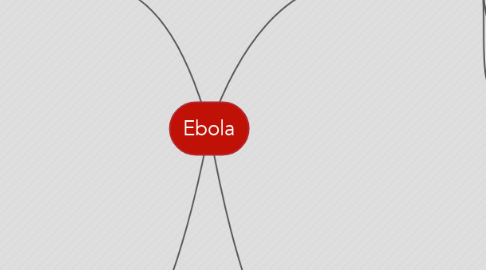
1. Sources
1.1. How the Ebola Outbreak Became Deadliest in History
1.2. What Happens to Your Body When You Get Ebola?
1.3. Ten Things You Really Should Know About Ebola
2. 2014 Outbreak
2.1. This is the biggest and deadliest outbreak so far
2.2. Why has it grown so large? Why now?
2.2.1. Due to...
2.2.1.1. travel patterns of bats across Africa
2.2.1.2. weather patterns in the region
2.2.1.3. + other factors
2.3. Why is this outbreak so severe?
2.3.1. The virus causing this outbreak is the deadliest type of Ebola virus.
2.4. Where Is it Happening?
2.4.1. West Africa
2.4.1.1. Guinea
2.4.1.2. Liberia
2.4.1.3. Sierra Leone
2.4.1.4. Until now, none of these three West African countries had ever experienced an Ebola outbreak.
3. Treatment
3.1. There is currently no vaxine against EVD.
3.2. There is currently no cure for EVD.
3.3. Current treatments and therapies
3.3.1. Giving patient support
3.3.2. Preventing dehydration
3.3.3. Keeping patient cool to mitigate the effects of the fever
3.3.4. Giving pain relievers
3.3.5. Monitoring oxygen levels & blood pressure
4. Course of Disease
4.1. Initial infection
4.1.1. Through contact of bodily fluids (including semen)
4.2. Incubation period
4.2.1. Between 2 and 21 days
4.3. Actual disease
4.3.1. Day 1
4.3.1.1. Ebola is attacking immune system, wiping out T-lymphocyte cells
4.3.1.2. Patient is now infectious himself
4.3.1.3. Symptoms
4.3.1.3.1. No appetite, head is aching, throat is sore, slightly feverish
4.3.2. Next 2 to 7 days
4.3.2.1. Symptoms
4.3.2.1.1. Body aches all over, chronic abdominal pain, fever intensifies, vomitting and diarrhoea
4.3.3. Crisis Point: Symptoms will either gradually recede or will progress to “cytokine storm”
4.3.3.1. Recovery
4.3.3.2. Cytokine Storm
4.3.3.2.1. =Convulsion of ravaged immune system that will plunge patient into the terminal phase of Ebola virus disease known as haemorrhagic fever
4.3.3.2.2. Releases inflammatory molecules into circulatory system; immune system attacks every organ in body
4.3.3.2.3. Tiny blood vessels burst everywhere and patient begins slowly to bleed to death
4.3.3.2.4. Death
5. Some Facts
5.1. Ebola virus disease (EVD) is an acute viral illness that is caused by three of the five species within the Ebolavirus genus.
5.1.1. Zaire Ebola
5.1.1.1. The species that is causing the current outbreak
5.1.1.2. Deadliest type
5.1.1.3. Has killed up to 90 percent of those it infected in previous outbreaks
